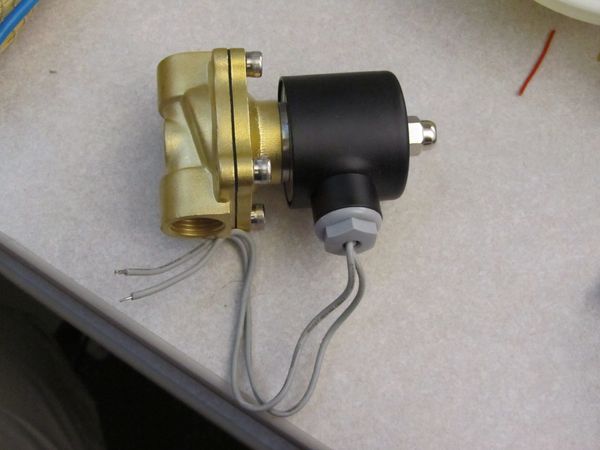I’m having trouble with the upper valve that will allow air to be released from the hull (thus decreasing buoyancy and giving some downward thrust). I mean, I’m having trouble with everything, but that’s why I’m doing this, right? Anyway, I decided to order a couple underwater solenoid valves in the hope that I could stick one in the robot and have it work (hahahahaha). I found several suppliers in China listed on this site alibaba.com, and settled on Nuoling Pneumatic. Most of the other options either weren’t waterproof, were too big, didn’t support a 12 V power supply, or had a large minimum order size. The two I bought were $12.35 each, which is less than I was expecting (although the shipping was $55 for two units).
The valves were a lot bigger and heavier than I expected. You can see it’s basically a big chunk of brass connected to the waterproof electrical components. Fortunately it’s easy to take apart:
